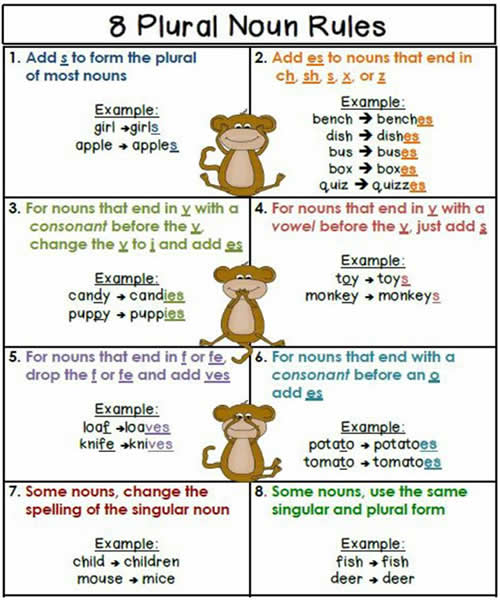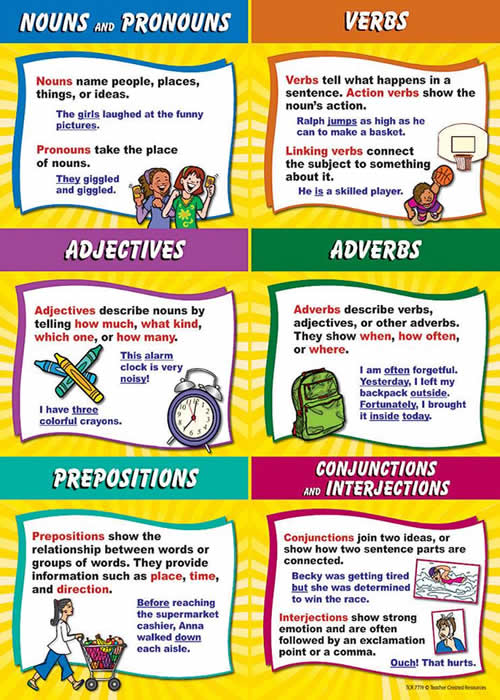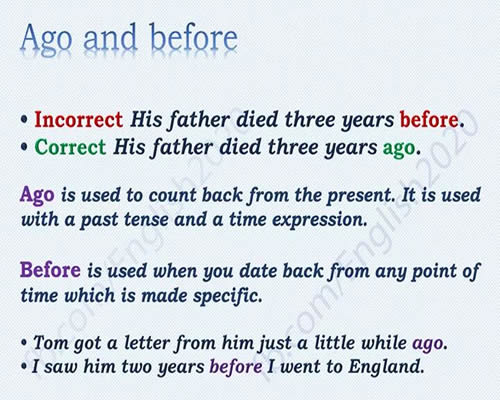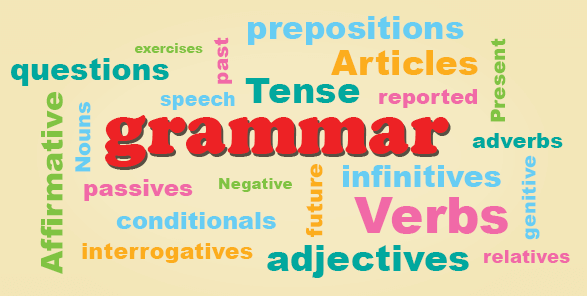Category: Grammar
8 Plural Noun Rules Add s to form the plural of most nouns Add es to nouns that end in ch,sh,x or z For nouns that end in y …
Some Common Verbs (have, do, make, take, break, catch) and Uses Have; have a bath, have a drink, have a good time, have a haircut, have a holiday etc… …
Prepositions of Place – Visual Learning Method at, behind, under, between, in, on, at home and etc. follow the picture;
English Expression – Nouns, Pronouns, Verbs, Adjectives, Adverbs, Prepositions, Conjunctions, Interjections Do you want to learn Nouns, Pronouns, Verbs, Adjectives, Adverbs, Prepositions, Conjunctions, Interjections? Let’s follow the list;
Uses of ‘Ago’ and ‘Before’ Ago is used to count back from the present. It is used with a past tense and a time expression. Before is used when …
Causatives The causative is a common structure in English. It is used when one thing or person causes another thing or person to do something. This page will explain …
Uses of Also, Too and So The word also goes before the main verb and after the verb to be. The word too goes at the end of the …
Parts of speech table This is summary of the 8 parts of speech. This pats; Verb, Noun, Adjective, Adverb, Pronoun, Preposition, Conjunction, Interjection. Follow the list for function, job, …
Nouns that can be Countable and Uncountable Sometimes, the same noun can be countable and uncountable, often with a change of meaning. Examples; hair, light, noise, paper, room, time, …
Differences Between “Which” and “That” Use ‘which’ with a comma for non-restrictive relative clauses. Non-restrictive relative clauses give additional, but not essential information. Use ‘that’ without comma for restrictive …










